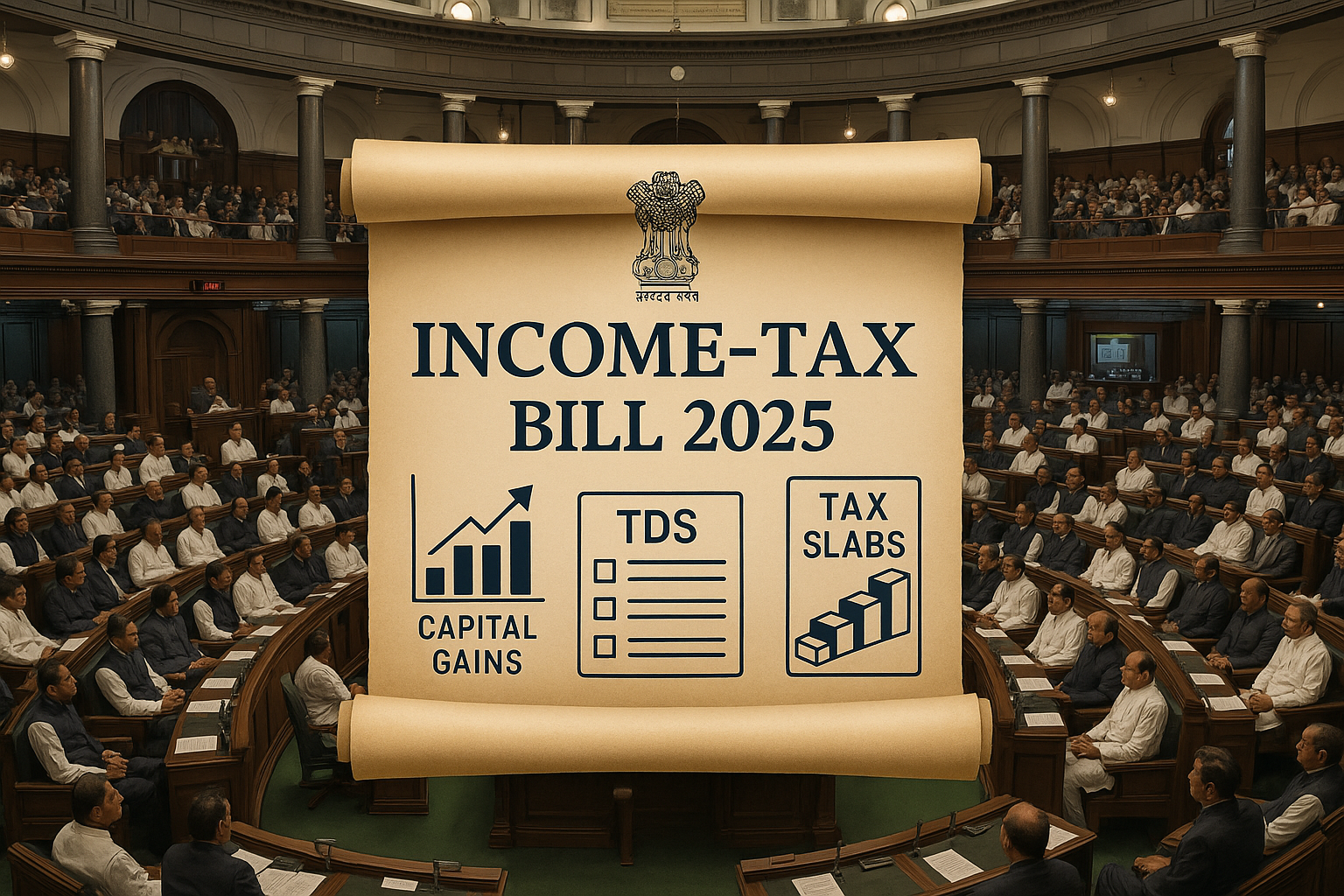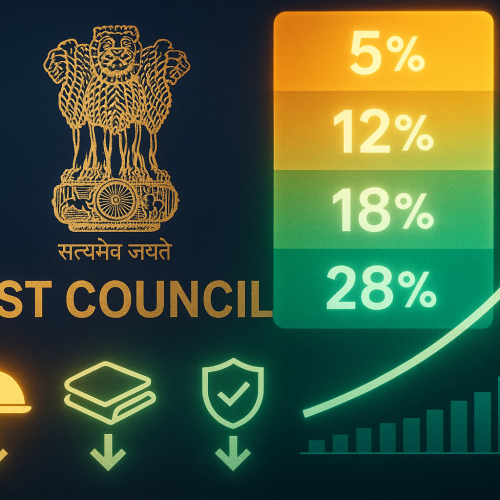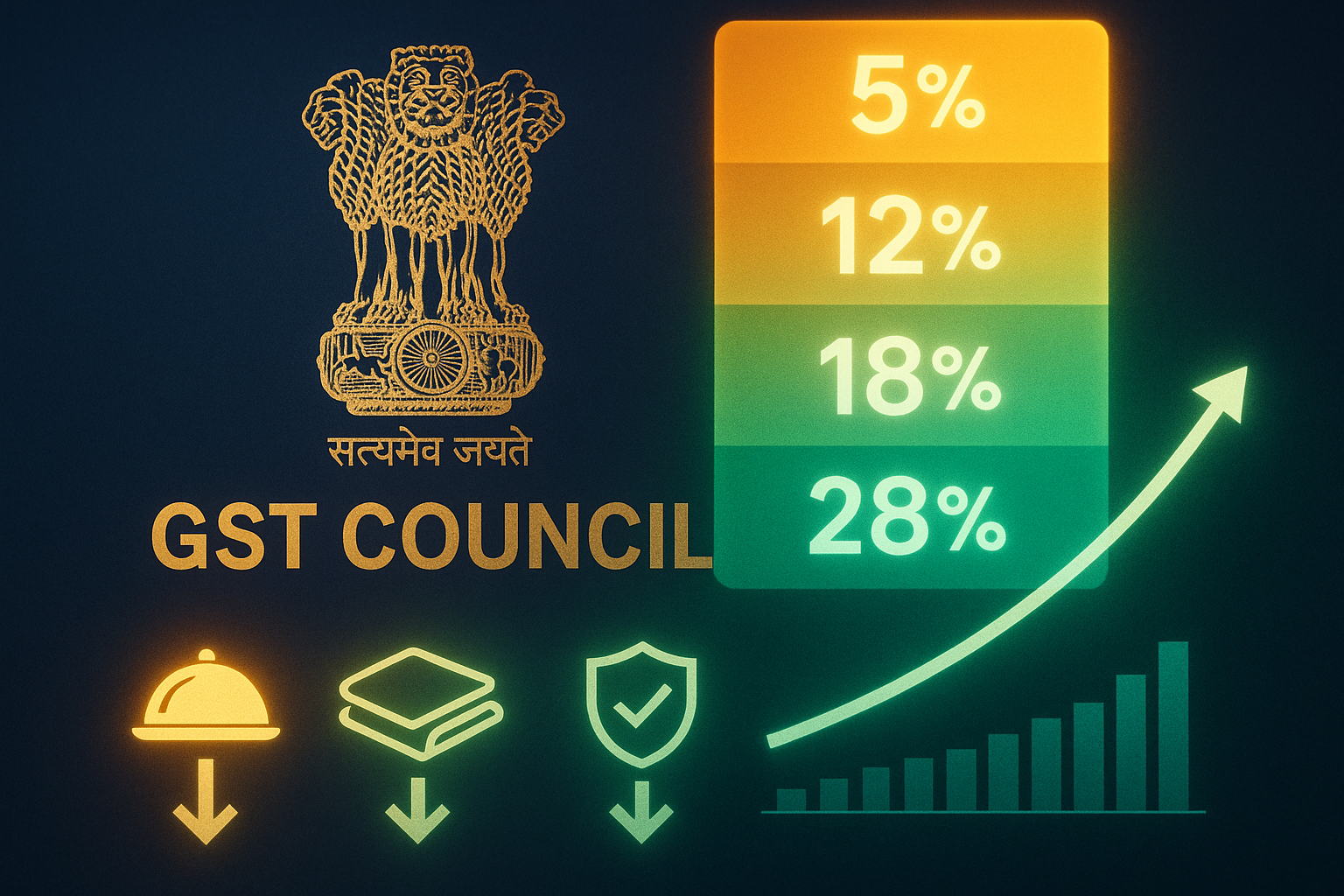The Government of India is preparing to introduce a long-anticipated overhaul of the country’s direct tax regime with the tabling of the Income Tax Bill, 2025 during the ongoing Monsoon Session of Parliament. As per senior finance ministry officials, this landmark legislation is expected to simplify, modernize, and streamline income tax laws in line with global best practices while addressing ambiguities around capital gains, TDS rules, and compliance standards.
This move marks the most comprehensive reform of India’s direct tax laws in over six decades since the enactment of the Income-tax Act, 1961.
Background & Objective
The Direct Tax Code (DTC) reform has been under discussion for several years, with multiple committees recommending structural and procedural changes to reduce litigation, widen the tax base, and ease compliance for individuals and businesses alike.
With the 2024 General Elections behind and a renewed policy mandate, the Ministry of Finance aims to:
-
Replace outdated provisions of the current Income-tax Act
-
Rationalize capital gains taxation across asset classes
-
Review the existing Tax Deducted at Source (TDS) regime
-
Codify simplified return filing and dispute resolution mechanisms
-
Introduce consistency across tax slabs, exemptions, and incentive structures
What to Expect in the Income Tax Bill 2025
1. Capital Gains Rationalization
The bill is likely to introduce uniform holding periods and tax rates across asset classes—stocks, mutual funds, debt instruments, real estate—eliminating the current fragmented system. This could improve predictability for investors and reduce arbitrage opportunities.
2. TDS Rules Overhaul
The current TDS framework, criticized for its complexity and multiple rate heads, may see a consolidated, sector-specific approach, reducing the burden on both deductors and deductees.
3. Digital Filing and Pre-Filled Data Integration
To boost ease of compliance, the proposed law may mandate pre-filled returns, drawing from databases like PAN, Aadhaar, and AIS, improving accuracy and reducing manual errors.
4. Dispute Resolution Mechanisms
The Income Tax Bill is expected to provide a structured settlement mechanism similar to the Vivad se Vishwas scheme and expand on faceless assessments and e-appeals, enhancing taxpayer confidence and reducing backlogs.
5. New Slabs & Deductions Review
The government may revisit the dual tax regime—existing vs. new regime (sans exemptions)—to make it more aligned with middle-class savings behavior and broader macroeconomic goals.
Industry & Expert Expectations
Tax professionals and policy analysts have broadly welcomed the move but emphasized the need for clarity and consultation.
“This is a once-in-a-generation opportunity to bring certainty, simplicity, and global alignment to India’s tax laws. But implementation will be key,”
— CA Manish Mishra, Direct Tax Consultant
“Capital gains treatment must be fair across asset classes. Rationalizing holding periods and reducing litigation is long overdue,”
— CA Manoj Kumar Singh, Senior Advisor, BFSI Strategy
Global Context
India’s tax reform push mirrors similar structural transitions in OECD nations, which are moving towards transparent, digitally-enabled tax systems with strong enforcement but simplified rules. The G20 global minimum tax agenda has also influenced India’s approach to aligning domestic and cross-border tax treatments.
What’s Next?
The bill will be presented for parliamentary debate in the second half of the Monsoon Session, with implementation likely from FY2026, post stakeholder consultations and necessary rule framing.
Finance Ministry officials have indicated that public and industry feedback will be sought after tabling the draft, allowing time for refinements before final adoption.
Conclusion
The proposed Income Tax Bill, 2025 could become a turning point for India’s direct tax landscape. If executed well, it has the potential to enhance taxpayer trust, improve compliance, and align India with a modern global tax framework. However, the balancing act between revenue generation, investor confidence, and compliance simplicity will determine the reform’s long-term success.












